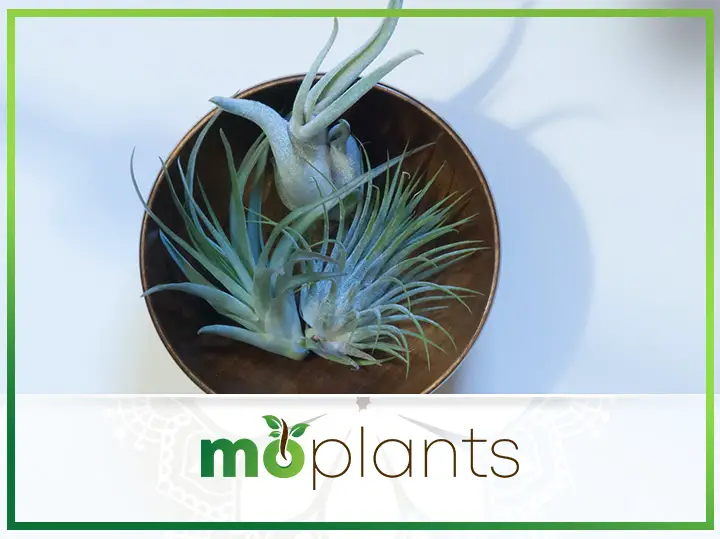The otherworldly appearance and unique growing conditions of an air plant have made it one of the most popular options among brown-thumb gardeners. As its name suggests, this fascinating plant doesn’t need soil to grow because it grows in the air. There are quite a few varieties of this enchanting houseplant, each having distinctive features. While the leaves of some air plants may look like tentacles of a mythical sea creature, others may remind you of alien appendages shown in sci-fi movies.
Though it may look like air plants were transported to earth from some other planet, these trendy plants are native to northern Mexico, the south-eastern United States, the Caribbean, and Argentina. The ethereal air plant has gained popularity over the last few years, frequently appearing on the glossy pages of interior design magazines across the world.
One of the main reasons air plant terrariums have become a staple in contemporary décor is because these houseplants are incredibly easy to grow. They have a forgiving nature and can thrive in less-than-ideal conditions. Since they are a bit different from your average houseplants, they may have slightly different requirements. However, just like all other plants, the thing they need the most is care and affection.
Introduction: Air Plant
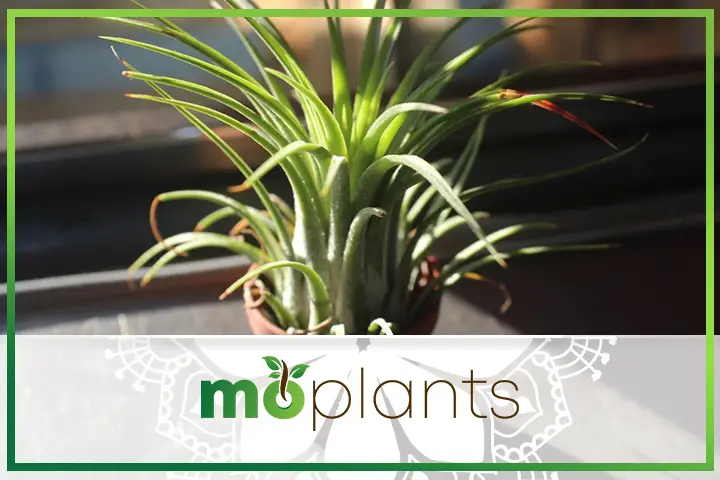
The botanical name of the air plant is Tillandsia. It is a genus of more than 600 evergreen perennials belonging to the Bromeliaceae family. Moreover, these flowering plants are epiphytes. Instead of growing in soil, they grow on other plants by holding on to their branches. However, they don’t absorb nutrients from the host plants and only use their roots for mounting.
Every variety of air plant has a different appearance, though most feature long and narrow triangle-shaped leaves growing in a rosette pattern. The new growth always appears from the center of the plant, with most species producing tubular or funnel-shaped flowers in red, pink, and purple hues. Most air plants only bloom once during their lifetime, though the flowers can last from a few days to a couple of months. It is also worth mentioning that air plants are tiny, which gives them an almost ornamental appearance. The size of these beautiful plants ranges between 2 and 12 inches, making it easier for homeowners to incorporate this green beauty in their décor.
In addition, the foliage of this plant is not always green. While most air plant varieties have spiky and fuzzy leaves in different shades of green, you can also find ones that have coral or silver leaves. Owing to their overall similarities, it is pretty easy to get confused between different plant species. However, as a rule of thumb, you must remember that air plants with dust-coated silver foliage are primarily xeric, which means they come from dry and warm environments. On the other hand, the air plants with green and shiny leaves are usually mesic, meaning they are native to tropical forests. These air plants typically require more water than the xeric types and thrive in shaded spots.
In their native habitat, air plants hang from the branches of trees and survive by absorbing rainwater and bird droppings. However, when grown indoors, air plants absorb moisture from their air through their leaves. Interestingly, a small variety of this houseplant can be grown in soil, but the rest must be grown in open terrariums or empty pots.
The exquisite appearance of Tillandsia can add color, depth, and texture to your home interior. You can display them on your coffee table or hang them in an appropriate container in any part of your house.
How to Grow Air Plant
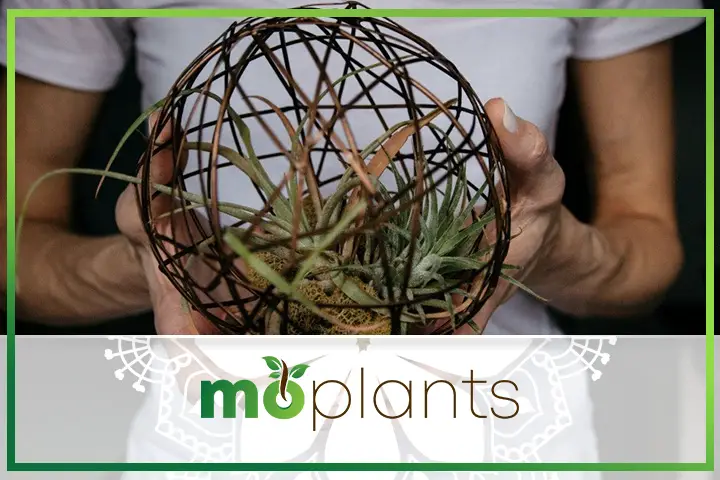
Since they don’t grow in the ground like other plants, we have put together some easy-to-follow tips on how to grow air plants indoors that beginners will find helpful.
Placement
Air plants don’t need dirt, so please don’t try to grow them alongside your succulents and other houseplants. Instead, you can place them in a shallow bowl, glass vase, or an open terrarium filled with colorful pebbles and sand. You can also tie air plants to driftwood using a thin wire or fishing line before placing it inside an open container.
Ideal Temperature
These beautiful plants flourish in warm weather with temperatures ranging between 50 and 90 degrees Fahrenheit. If you have placed your air plant outdoors, make sure to bring them back inside as soon as the temperature drops below 45 degrees. If exposed to cold weather, the plant may die.
Humidity Level
Tillandsia prefers high humidity. The plant usually grows well if the humidity level is around 65%. Therefore, if you live in a dry region, consider investing in a humidifier or mist the plant regularly to ensure it doesn’t dry out. You can also place your air plant container on a tray filled with pebbles and water to ensure the leaves can easily absorb moisture from the air.
Exposure to Sunlight
In their native habitat, these plants grow under the canopy of trees. So, if you want to grow air plants indoors, make sure to keep them in a bright spot that receives filtered sunlight. In other words, please don’t keep the plant under direct sunlight, as it may cause the leaves to burn. Some air plant varieties can tolerate more sunlight than others, while some thrive in darker corners of the house.
Usually, about four to six hours of filtered light per day is more than sufficient for these plants.
Watering
There are several different ways of watering air plants. You can mist them or soak them, depending on how much water they require.
The plants with green and glossy foliage usually need more water, so you can submerge them in a small jar filled with bottled water. Let them soak for about 30 minutes before removing them from the water. After gently shaking them to remove the moisture, you can place your air plants upside down on a paper towel. Once the plant is completely dry, please put it back inside its container. It would be best if you did this once a week.
Alternatively, you can mist the air plant after every two days to ensure it looks fresh and healthy for a long time.
Mounting
You should only mount your air plant on things that don’t retain water, such as shells, rocks, driftwood, and other decorative mounts. Depending on your preference, you can stick the plant to the support using an adhesive such as glue or bind them together using a wire. Regardless of which method you choose, please make sure you will be able to soak the plant in water for its weekly bath.
Infographic
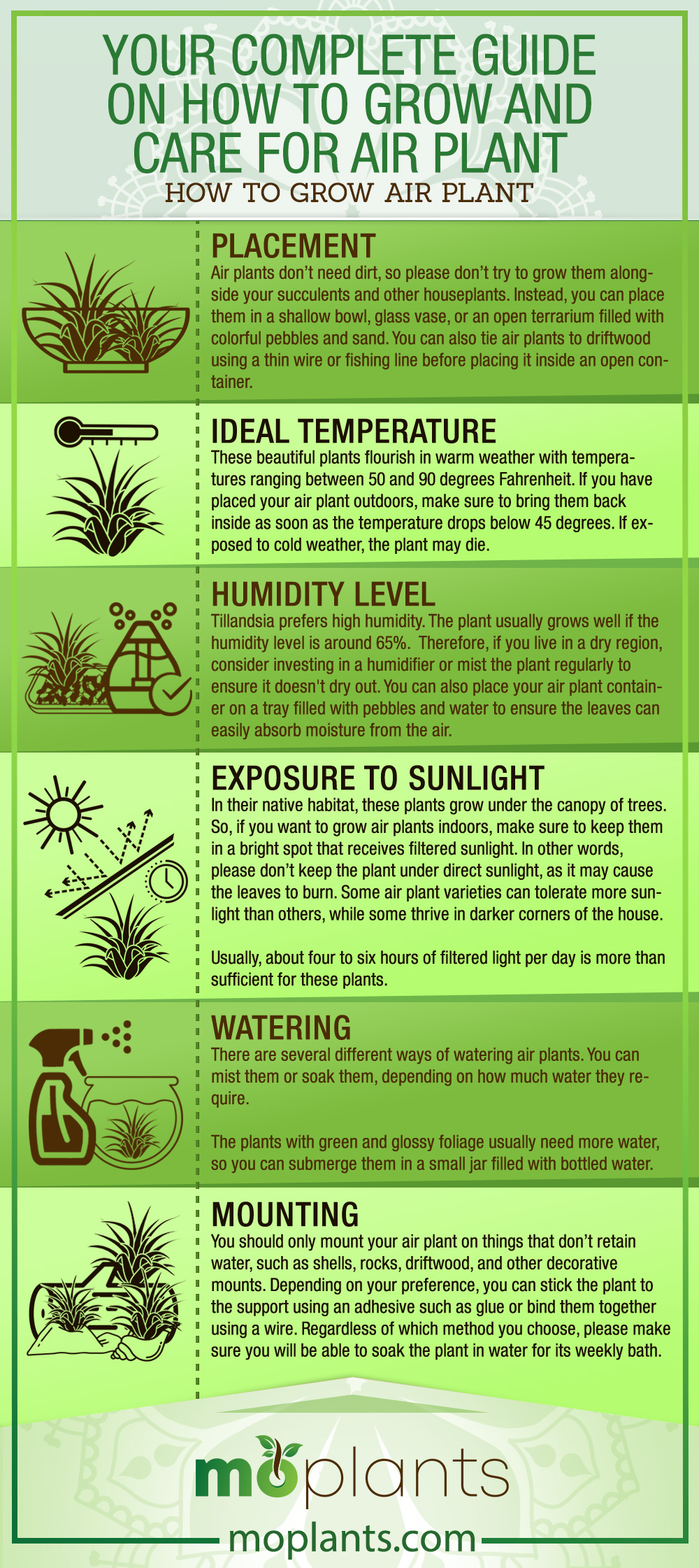
Air Plant Propagation Method
As air plants age, they produce baby plants that are commonly referred to as “pups.” These pups grow under the leaves of the parent plant, and you can remove them safely once they grow about one-third of the size of the bigger plant. Once separated, you can divide and mount the pup so it can develop into a new plant.
You can also leave the pup on the parent plant and continue to remove the leaves of the older plant as they begin to die. It takes about two years for the pup to develop into a plant and bloom. Usually, an air plant can produce up to three pups as they mature.
You can also grow Tillandsia from the seeds produced by its flowers. However, germinating these seeds is a long process and may even take years.
Air Plant Care Tips
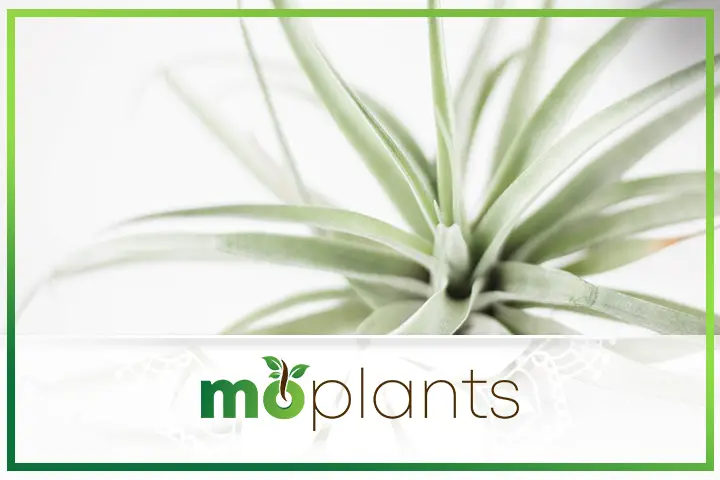
Like all living plants, air plants also need a little bit of attention and love. Here are some of the most essential air plant care tips that will ensure your eccentric houseplant remains happy and healthy.
Pruning and Trimming
Air plants don’t require frequent trimming or pruning. However, if you notice a dead or wilted leaf, you can remove it by gently pulling it from the plant. If your plant is old, please make sure there isn’t a pup growing under the dead leaf, as removing the dead foliage might affect its growth.
Fertilizer
Though they grow in the air, your air plants also need to be fed every month. The best way to do so is by adding a few drops of specialized water-soluble fertilizer in the water and submerging your plant in it. It will allow the leaves to absorb water and nutrients at the same time.
Use Filtered Water
Unfiltered water can kill an air plant. The chlorine and other chemicals found in tap water can clog the trichomes on the leaves of your houseplant, preventing them from absorbing the water and other nutrients. As a result, the air plant will turn brown and eventually die.
Therefore, you should always use distilled or bottled water to keep your air plants hydrated.
Open Container
Closed glass terrariums may look aesthetically pleasing, but they are not suitable for air plants. One of the most essential air plant care tips is to place it in an open container so the leaves can receive fresh air throughout the day. If there is no air circulation in the container, the plant may develop root rot or fungal infection.
Infographic

Common Air Plant Problems and How to Solve Them
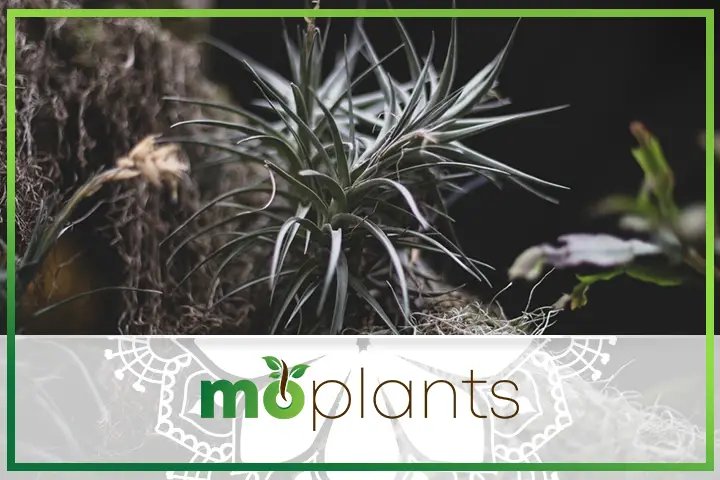
Let’s take a look at some of the most common problems you may encounter while growing air plants in your home.
Browning Leaf Tips
There are several reasons your air plant may have developed brown leaf tips. It could indicate that your plant is receiving a lot of direct sunlight, which means you should consider moving it to a different part of the house. Moreover, it may be a sign that your plant is dehydrated. You can remedy that by misting the plant regularly and soaking it in filtered water every week.
You can also carefully cut the damaged parts of the leaves with a sharp and sterile knife.
Yellow Leaves
If your air plant has developed yellow leaves, it probably means it is not getting enough sunlight. The best way to counter this problem is to move it to a sunnier spot. Overwatering and standing water in the plant can also cause yellowing leaves, so please dry the plant after every soak.
Root Rot
The standing water in the plant can also result in root rot, especially if you place it inside an enclosed terrarium with limited air circulation. If the roots of your air plant look black or infected, you can trim away the damaged parts and move the plant to a different container.
Common Pests and Diseases
Tillandsia is vulnerable to mealybugs, scales, and mites, among other common pests. If you notice a waxy substance or tiny insects covering the leaves of your air plant, immediately separate it from the others to prevent the infection from spreading.
To get rid of these pests, spray the plant with a mild insecticide and move it to a bright spot near an open window.
Popular Varieties of Air Plant
People usually have difficulty identifying between different air plant varieties as some look almost identical while others look like different species altogether.
Here are some of the most popular air plant varieties that can brighten up your home.
Bulbosa
This bulb-shaped air plant looks like an exotic sea creature with unique tentacle-like leaves. Owing to its exceptional appearance, this plant is a favorite among interior designers. Some of the smaller variations of Tillandsia Bulbosa include Tillandsia Guatemala and Tillandsia Belize.
Xerographica
Also known as Xeros, this is one of the most popular air plant varieties. These plants have silvery foliage with leaves that curl and spiral as they mature. These statement plants can make your décor look luxurious and elegant.
Inoantha
It is a beginner-friendly plant with spiky silver leaves that turn green as the plant grows old. This variety of air plants is also called sky plants. Some of the most common types of Tillandsia Inoantha include Tillandsia Guatemala, Tillandsia Mexican, and Tillandsia Rubra.
Air Plant FAQs
Here are some of the most frequently asked questions about air plants.
Do air plants need the sun to grow?
Yes, air plants need bright but filtered light to grow indoors. During the summer months, you can even hang your plant outdoors in a shaded spot.
Can air plants live in artificial light?
The answer is yes. Air plants can survive if they receive up to six hours of adequate artificial light every day.
How long can air plants go without water?
Most types of air plants can go around two weeks without water. However, their leaf tips may start turning brown due to dehydration. The mesic air plants generally require more water to flourish.
How long do air plants live?
Depending on its type and environment, an air plant can live between three to five years or more.
Growing plants in your home can have a positive impact on your indoor environment and health.

